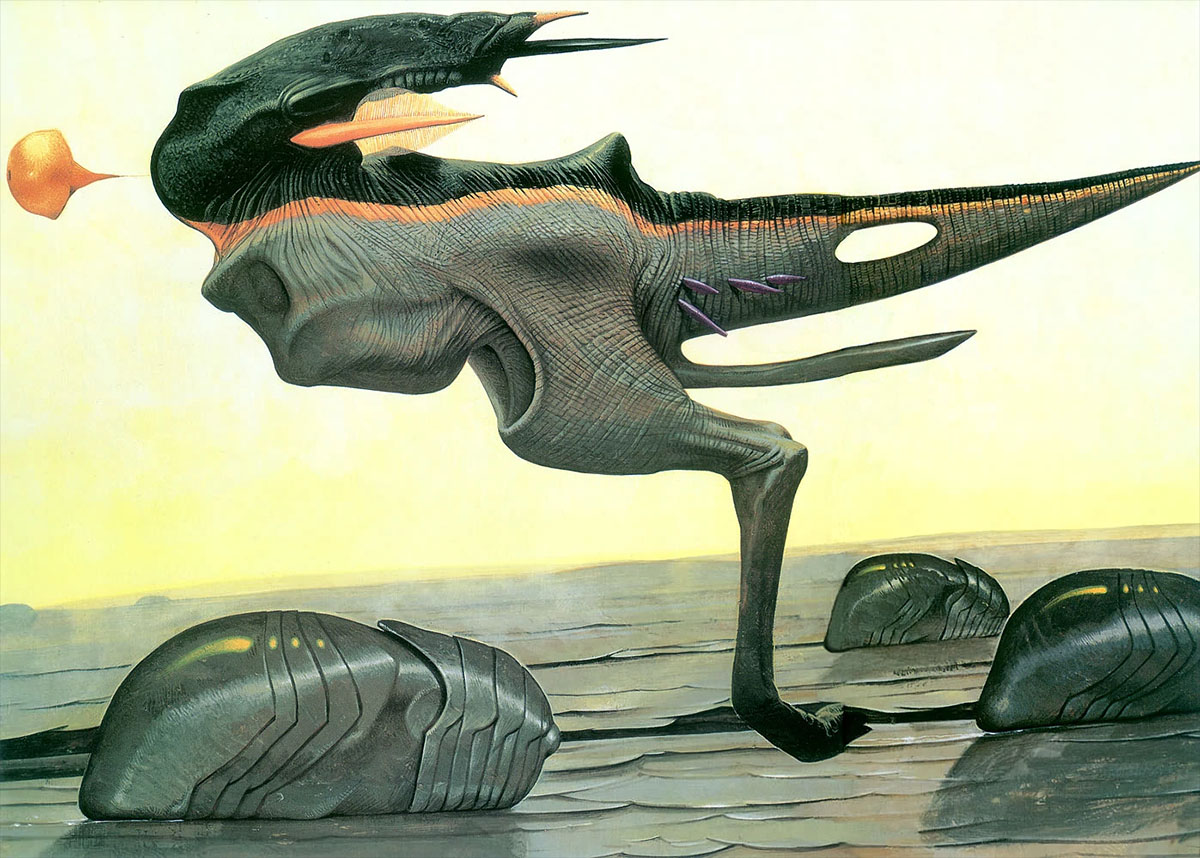another way to look at aliens

Sometimes I hate being a skeptic. As much as I want to believe in UFOs, every time I’m pouring over the reports of flying saucers and alien abductions, a persistent problem jabs me in the eye. The aliens are too human. They’re short, skinny gray skinned men with egg shaped heads and giant black eyes. Sure, they would be a different species if they actually existed, but they would have to be related to us to look the way they do. What are the odds that an upright, bipedal tetrapod with a body structure identical to ours would evolve that way completely on its own, without any contributions from our gene pool? It’s much more likely that any alien species we’ll eventually run into will be unlike anything we have on Earth.
If we want to visualize an alien, we’ll have to think about its chemistry and its environment but we also need to allow nature to impart its messiness and imperfections like vestigial organs or bizarre shapes. One of the main reasons why the iconic little gray men are so much like us, is our desire to relate to alien species. Making them look very similar to humans, gives us some degree of familiarity with what should otherwise be a totally confusing creature we would know nothing about. But when it comes to the science of the matter, we need to throw away our ideas about intelligence and aesthetics. Since intelligence is an evolutionary fluke, aliens are probably going to be feral animals. Because they evolved on a world with different conditions from ours, other kinds of body shapes and designs might have been better for survival.
The creature above, the Rimerunner from Wayne Barlowe’s project Expeditions, is perhaps one of the best guesses we can have as to what kind of aliens we might encounter on other worlds. During his education, Barlowe worked on illustrating natural history, serving an apprenticeship in the exhibitions department of The American Museum of Natural History so when he draws an alien creature, he’s applying all the rules we just talked about. That’s why his designs seem to be so plausible and provide a much better model for visualizing extraterrestrial life. Want to see what an intelligent alien might look like? Forget about the little gray men. An Eosapien is a much more accurate concept.
So the next time you hear one of the many stories about humanoid aliens flying around, taking random people aboard their spacecraft for sinister, invasive or downright sexual experiments and just generally scaring the living daylights out of a local populace, find a concept sketch of something like an Eosapien and ask yourself if you’re ready to imagine such a creature floating around, pushing touch screens and buttons with its tentacles and humming out instructions. In fact, try it right now. How does it make you feel? What do you prefer? Little gray men or eerie tentacled monsters with similar brainpower?





